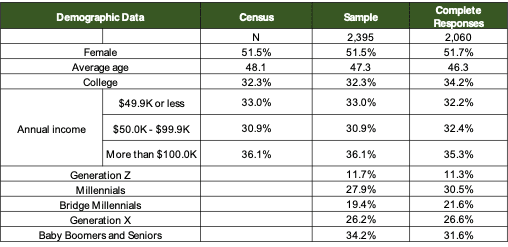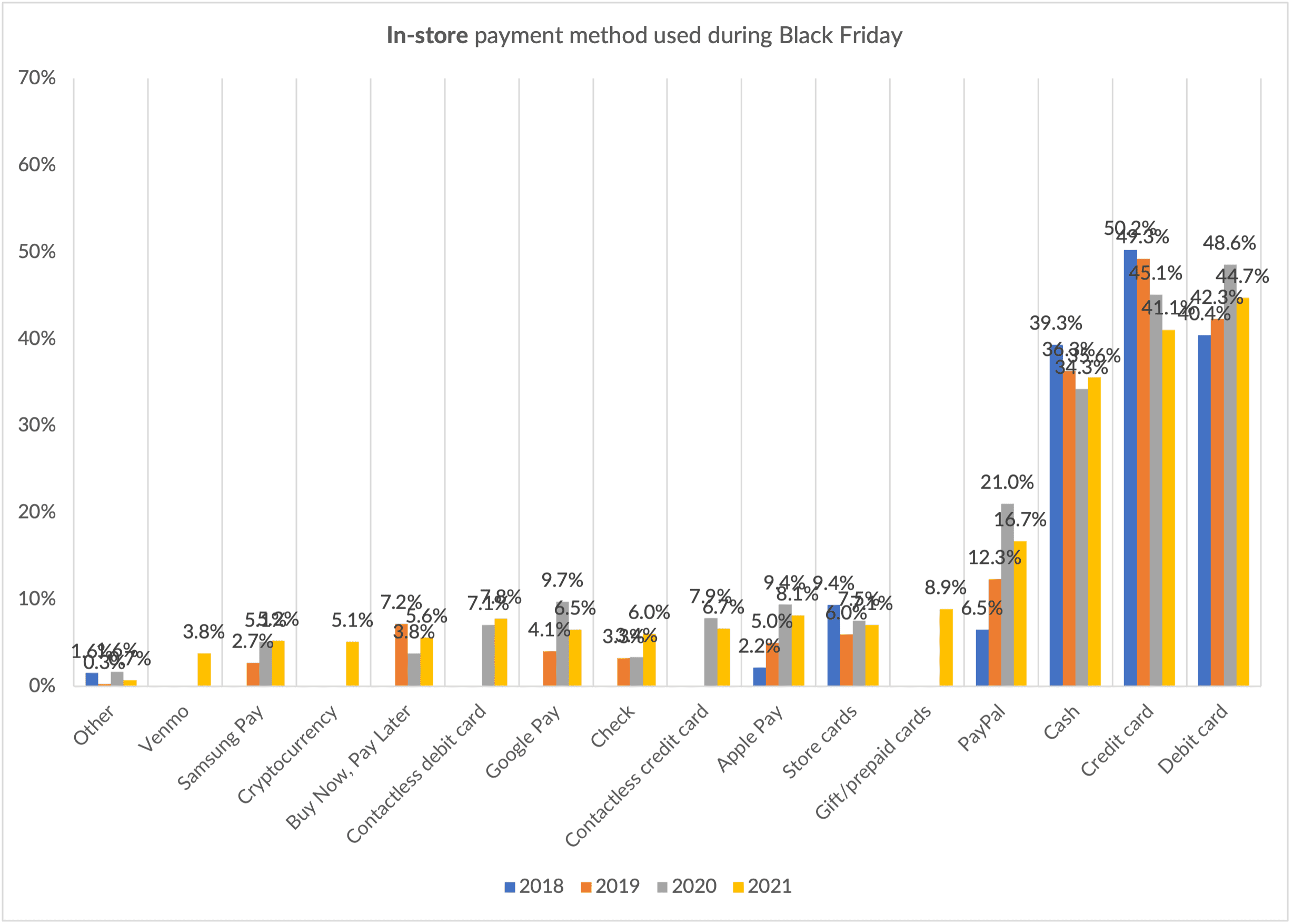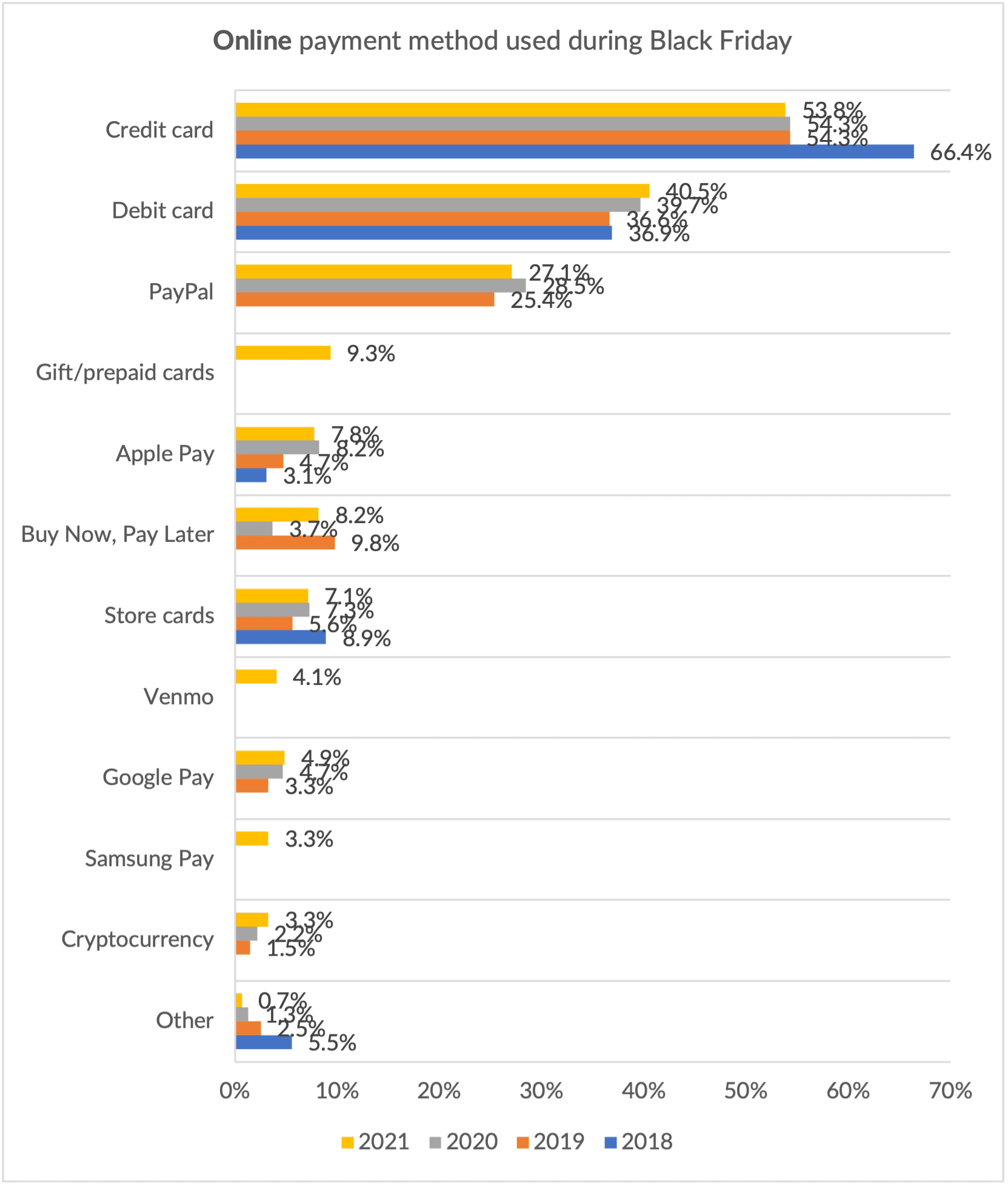
Black Friday has come and gone, and most people are likely immersed in Cyber Monday deals.
But data gleaned over Black Friday’s in-store and online shopping frenzy spotlight the ways in which consumers have been paying – and the ways in which they will pay, during this week’s deals and beyond.
Responses from more than 2,000 consumers tallied by PYMNTS captured the payment preferences of a sample that is representative of the United States overall. In terms of income, the sample was fairly evenly divided across income levels, with a third of respondents making up to $50,000, those earning between $50,000 to $100,000, and those taking home at least $100,000 in annual pay.
 Drilling down a bit, millennials and Baby Boomers were the most represented demographics (though only slightly), each comprising a bit more than 30% of the sample.
Drilling down a bit, millennials and Baby Boomers were the most represented demographics (though only slightly), each comprising a bit more than 30% of the sample.
Black Friday’s showing indeed gives a strong indication of just how well-entrenched debit has been as a payments choice this holiday season. Roughly 45% of the sample said they did all of their holiday shopping online, while a bit more than 28% said they’d done between 25% to 50% of their shopping that day. The respondents indicated that they’d expected to complete about 47% of their holiday shopping online – leaving an implied 53% of activity to be done in-store. Vaccinations and foot traffic seem to go hand in hand, as does the novelty of being able to crowd the aisles (and spar over Halo Infinite toys!).
Debit Holds Sway in Brick-and-Mortar Settings
The data show a clear bifurcation. In broad strokes: Consumers used cash on hand, across several payment methods, to buy goods in-store. More than 44% of respondents opted to wield debit cards at the proverbial register, with nearly another 8% using contactless debit cards in-store as well. Add gift/prepaid cards into the mix, which totaled about 9%, and it becomes clear that consumers, when it came to the tried-and-true doorbuster sales that have been a hallmark of the holidays, have a mental limit on what they would – and could – spend.
The use of debit in 2021 was markedly higher than what was seen in 2019 and 2018, which shows that there may be a bit of caution lingering in the wake of the economic volatility created by the pandemic – and also that they have cash cushions in place, tied to government disbursements, that were not there before. That “cash cushion” may also lend itself to the use of buy now, pay later (BNPL) options – which, though gaining in popularity and consumer awareness, still remain entrenched at a high single-digit percentage point “market share” of payments.

Source: PYMNTS Data
A bit more granular detail reveals that within the store setting, the vast majority of respondents attached their digital wallets – and, thus, their bank accounts – to their payments choices. Venmo, Samsung Pay and Google Pay were the top choices here.

Source: PYMNTS Data
Credit Is King – Online, at Least
Conversely, when it came to shopping online, PYMNTS’ surveys revealed that credit cards represented the majority of purchases, though less so than had been seen before the pandemic, a shift that makes sense as debit gained ground. In the latest reading, credit accounted for a bit more than 53% of purchases made across digital channels, though a far sight less than the 66% seen in 2018. Here, too, prepaid/gift cards made a significant showing in the most recent spate of Black Friday activity.

Source: PYMNTS Data
For those consumers who registered their cards to digital wallets, Samsung Pay and Venmo gained the lion’s share of online purchases.

Source: PYMNTS Data